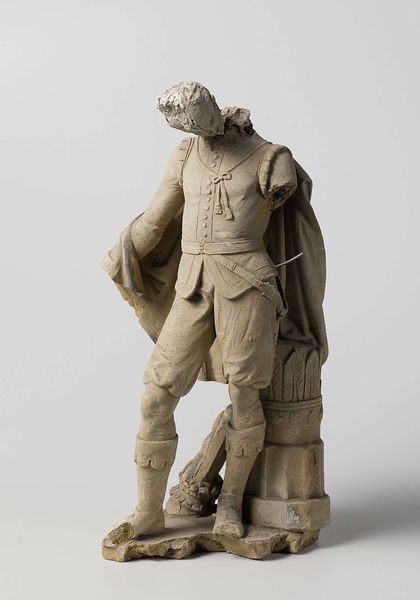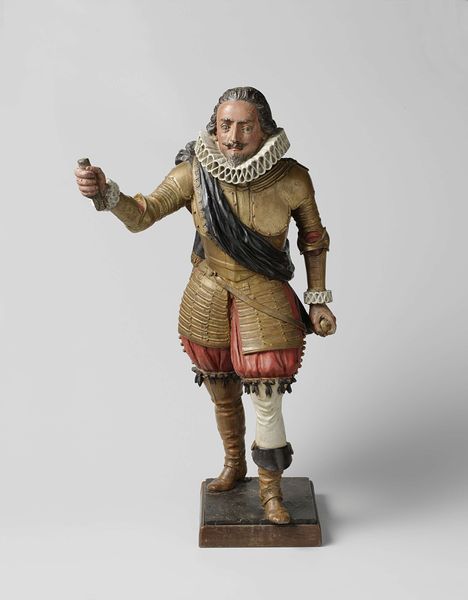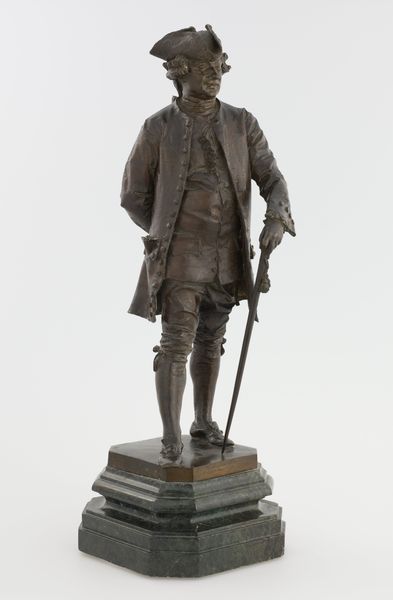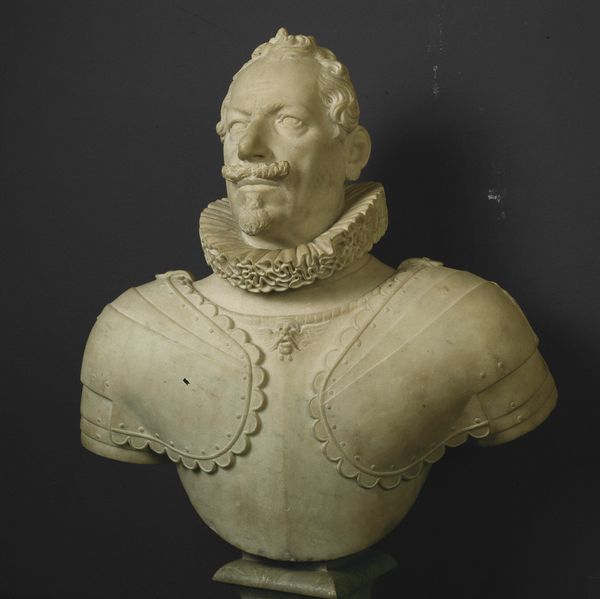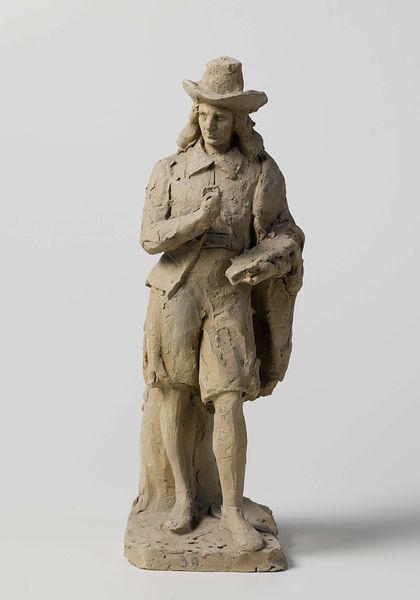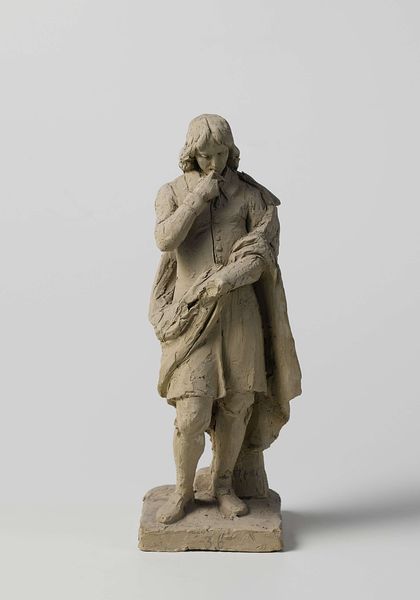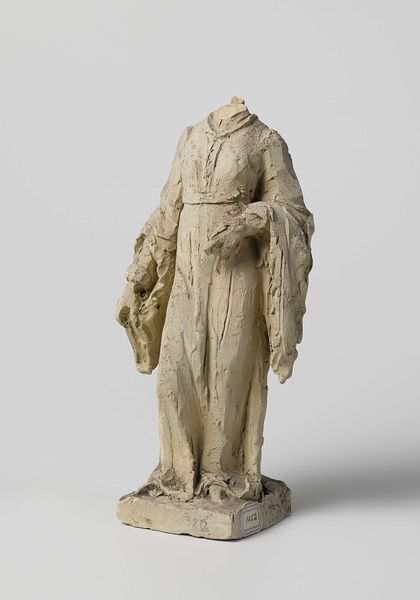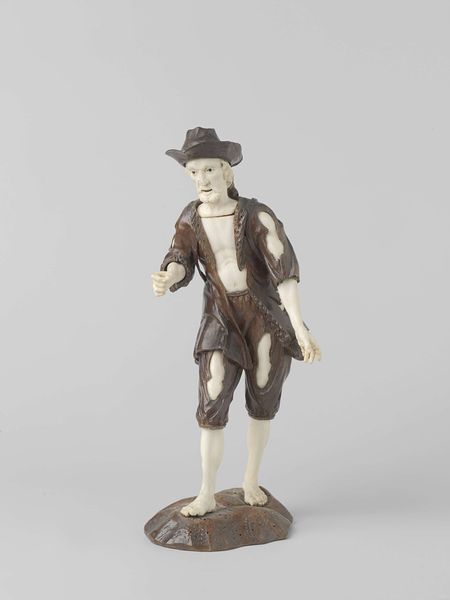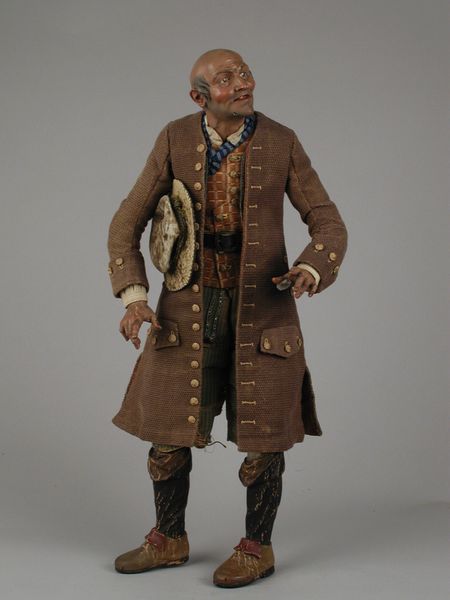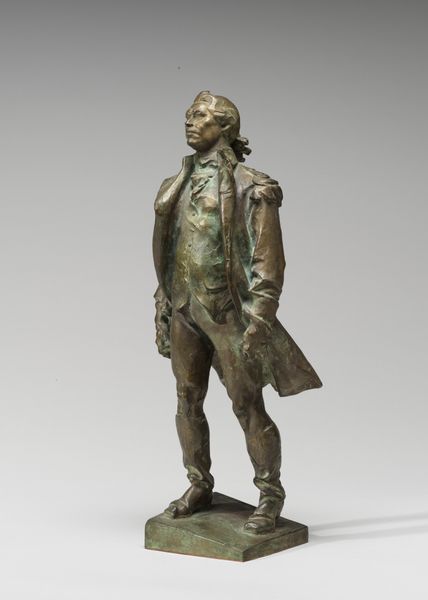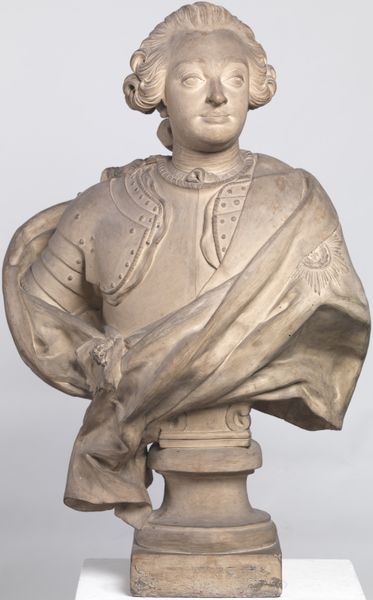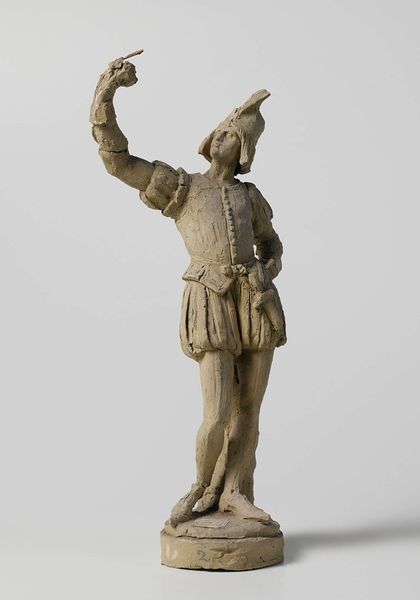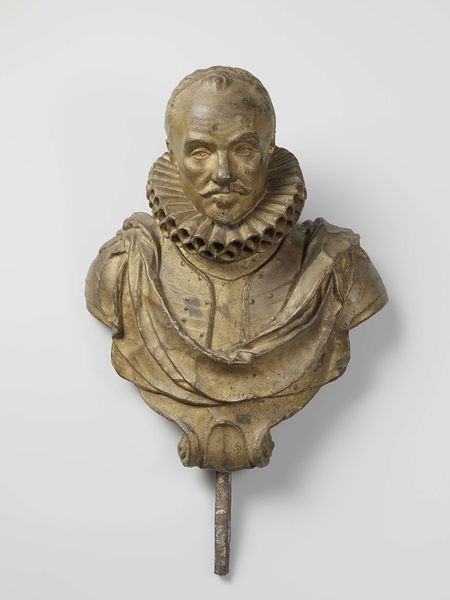
sculpture, wood
#
portrait
#
sculpture
#
figuration
#
sculpture
#
wood
#
history-painting
#
academic-art
#
statue
Dimensions: height 24 cm, width 9 cm, depth 9 cm
Copyright: Rijks Museum: Open Domain
This is Eugène Lacomblé's clay sketch for a statue of J.P. Coen, though the date is unknown. Coen was a controversial figure in Dutch history, known for his role in establishing the Dutch East India Company's control over parts of Indonesia in the 17th century. The image carries powerful visual codes. His clothing and stance are designed to project authority and status. The cape denotes power, while the doublet and hose mark him as a man of means. This sketch raises important questions about the politics of imagery. It highlights the way statues are used to shape public memory and reinforce particular narratives about the past. To fully understand this work, one would need to delve into the historical context of both Coen's life and the statue's commission, exploring Dutch colonial history and the ways in which it has been memorialized through public art. Examining archives and records that document the statue's commission and reception would provide valuable insights into the social and institutional forces shaping its meaning.
Comments
No comments
Be the first to comment and join the conversation on the ultimate creative platform.

